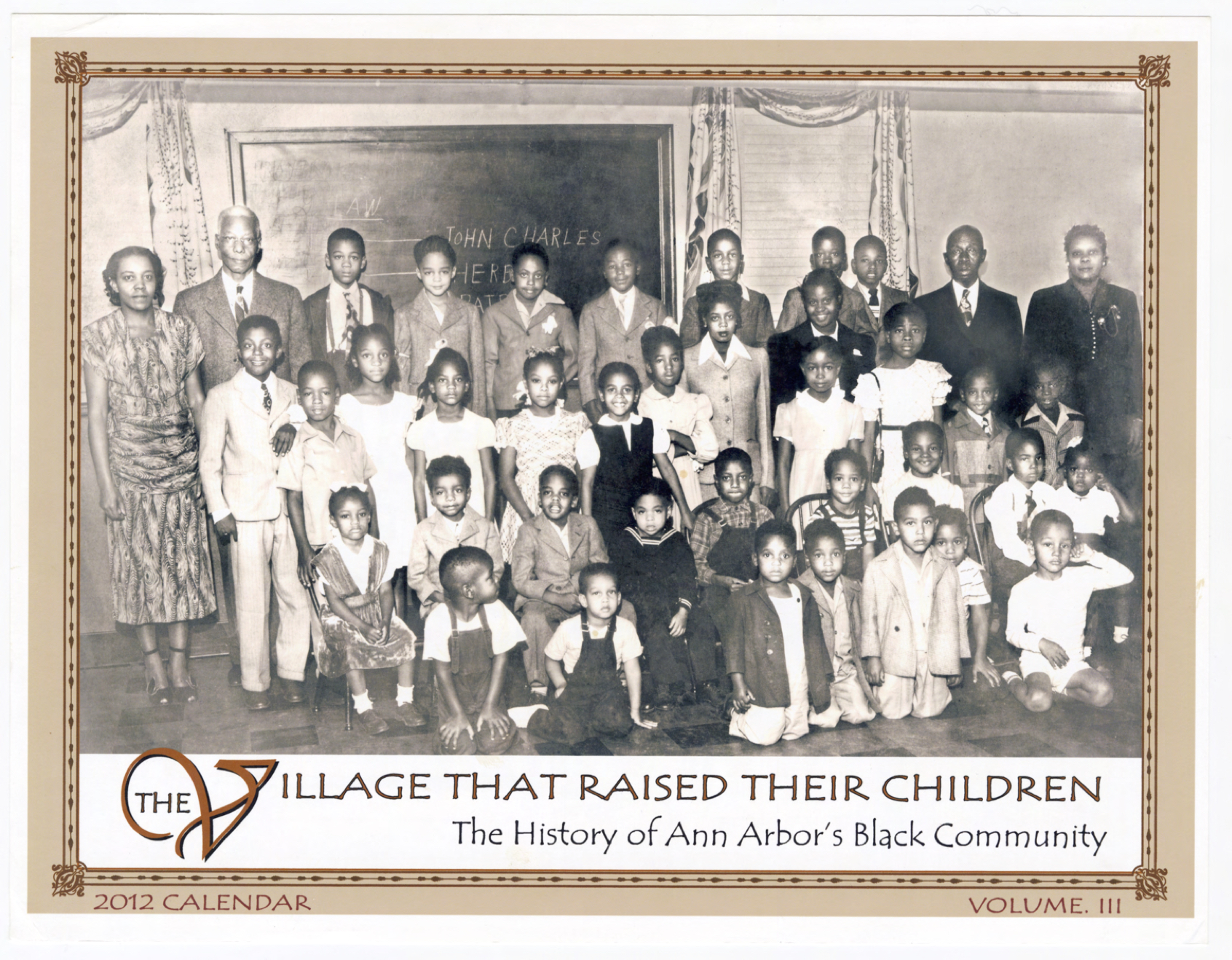
AADL Talks To: Bev Willis

Bev Willis is an Ann Arbor historian who has worked with several historical organizations, including the African American Cultural and Historical Museum, the city’s Historic District Commission, and the Washtenaw County Historical Society’s Museum on Main Street. Bev talks with us about her passion for local history and the mentors, family members, and cultural influences that helped chart the course of her career.

Ann Arbor's Lost Poet: Charles Henry Shoeman
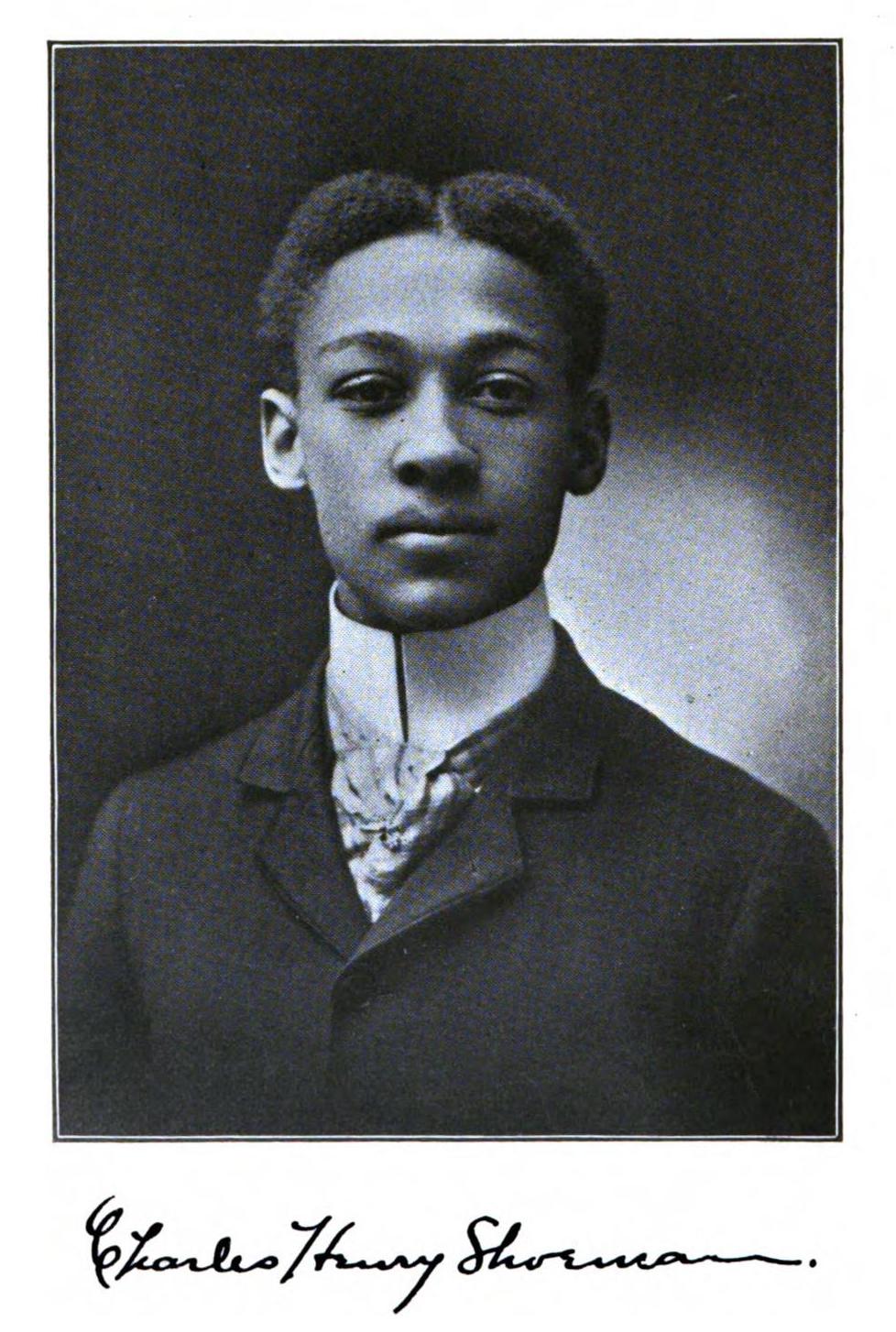
Turn of the century newspaper accounts paint a vibrant portrait of Charles Henry Shoeman: "utopian high class entertainer", "colored poet of Ann Arbor", "barber", "the youngest Afro-American writer in Michigan", "photographer", "the excellency of his verses", "student", "humorist", "assisted by his colored boys quartette", "author of an interesting books of poems", "lecturer", "elocutionary entertainment".
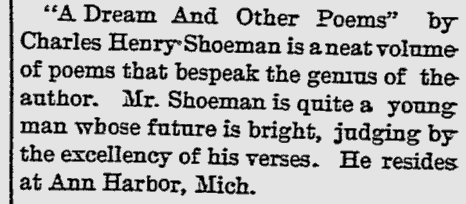
His anthology A Dream And Other Poems was published in Ann Arbor in 1899. The following year, a second edition was published. His writing made national news and he toured the United States and Europe, entertaining crowds with his words. By 1910, he had disappeared.
Charles Henry Shoeman appears in various lists of African American authors, anthologies of Black American writers, and collections of African American poetry, but biographical information is always missing. In February 1970, Ann Arbor News writer/photographer Doug Fulton highlighted the obscure poet with his article "Negro History Week Query: Who Was Charles Shoeman?". Frustrated with few answers, Fulton closed his article by declaring "The mystery cries out for solution, but we can only ask the question."
Revisiting the mystery in February 2024 has unearthed more of this unique young man's story. Assisted by the digitization of countless old newspapers and primary documents, a narrative of great talent and tragedy has emerged.
FAMILY HISTORY
Charles James (C. J.) Shoeman, his father, was born around 1849 near Palmyra, Missouri. C. J.'s mother was an enslaved person but his father a free man. C. J.'s sister, Lydia, was sold and taken to New Orleans. C. J.'s father connected himself with the Underground Railroad and led many enslaved people to freedom in Canada, including his own family. C. J., his mother, and remaining siblings were ferried across the Mississippi River by rowboat. C. J.'s father carried him all the way to Canada on his back. After the end of the Civil War, C. J. moved to Goshen, Indiana where he opened a barber shop.
Epsie Lewis, his mother, was born July 1851 in Kentucky. By 1870 she had relocated to Porter Township, Van Buren County, Michigan, with her parents and several of her siblings.
In November 1875, C. J. Shoeman married Epsie Lewis in Kalamazoo, Michigan.
EARLY LIFE - INDIANA
Charles Henry Shoeman's story began in Goshen, Indiana. He was born May 29, 1876 to C. J. & Epsie Shoeman. His middle name honored his maternal grandfather, Henry Lewis.


When Charles Henry Shoeman was less than a year old, his father, C. J. Shoeman, moved his barber shop into a space on the Kindig Block of Main Street in Goshen.
Lewis H., a second son, was born to Epsie & C. J. Shoeman in Goshen, April 1879. In the early 1880s, C. J. began studying the practice of law. He moved his family north to New Carlisle, St. Joseph County, Indiana, where he worked as both an attorney and a barber. In November 1889, C. J. owned a building in New Carlisle, and had a barber business in the basement.
STUDENT, BARBER, POET - ANN ARBOR, MICHIGAN

Around 1894 the Shoeman family relocated to Washtenaw County, Michigan. C. J. worked in the barber shop of Homer Fish in Saline until 1897. In 1896, Epsie opened a business of her own, which was the first beauty parlor for women and children in Saline.
In 1898, the Shoeman family surfaced in the Ann Arbor City Directory. They lived in a home on Main Street, between Felch Street & Summit Street. C. J. had a barber shop listed on East Huron, between Main Street and 4th Avenue.
Charles Henry Shoeman stepped into the limelight when he was 23 years old. In 1899, local bookstore owner & publisher George Wahr published Shoeman's A Dream And Other Poems. The following year a second edition was published, with an additional 22 poems included.
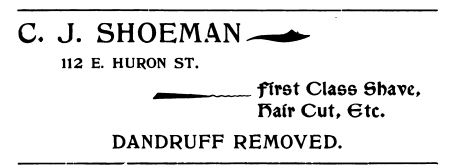
An April 1900 review in the Detroit News-Tribune shed light on the young author: "Young Shoeman was born in Goshen, Ind., and has lived in Ann Arbor about six years. Here he attends high school and supports himself by working in a barber shop during his spare hours. In appearance he is of medium height, with a frank, pleasant face and easy bearing. He says that the reason he began to write rhymes was because he couldn't help it, and adds that his aim is to do something for his own race by means of his verse."
Inside the first pages of his anthology, a photo of Charles Henry Shoeman greets the reader. A sharply dressed young black man sports a crisp white high collar, his signature below with an elegant flourish. This image, along with his poetry, quickly spread across the United States. Reviews were positive, and the Detroit Informer went as far to offer a copy of Shoeman's book to new subscribers of their newspaper: "Do not fail to get a copy of this book, which is from the pen of the youngest Afro-American writer in Michigan."
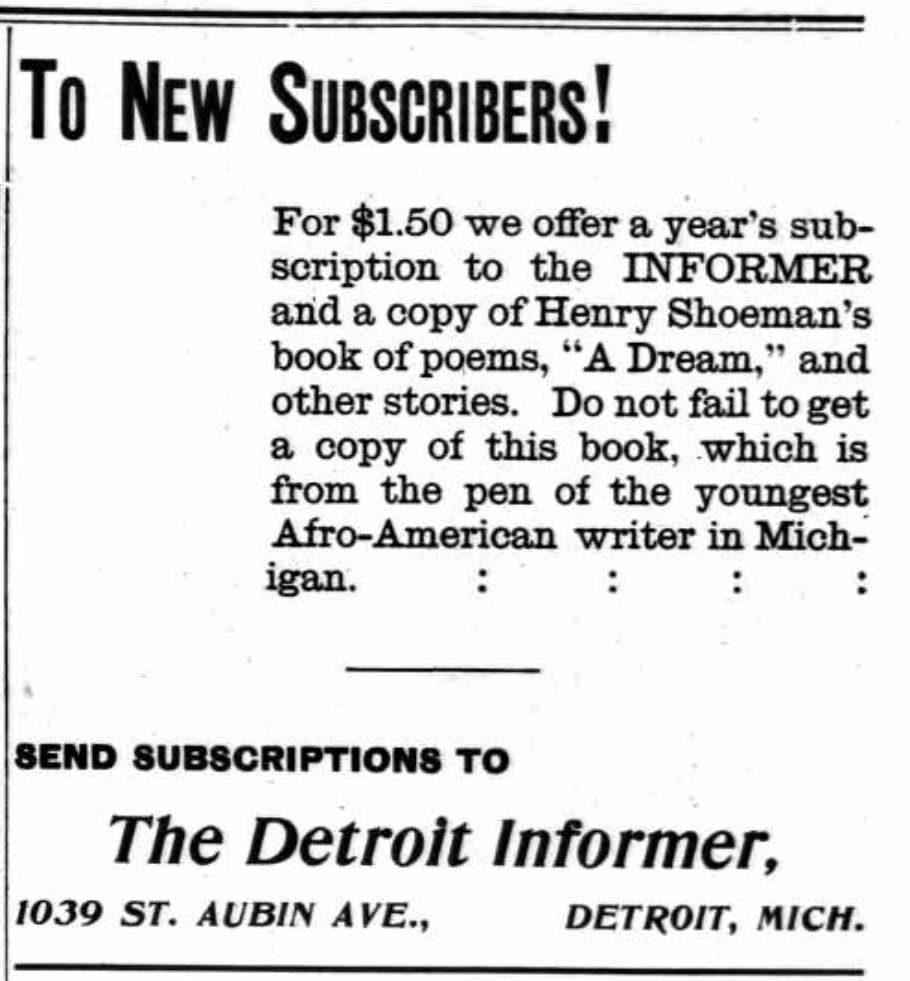
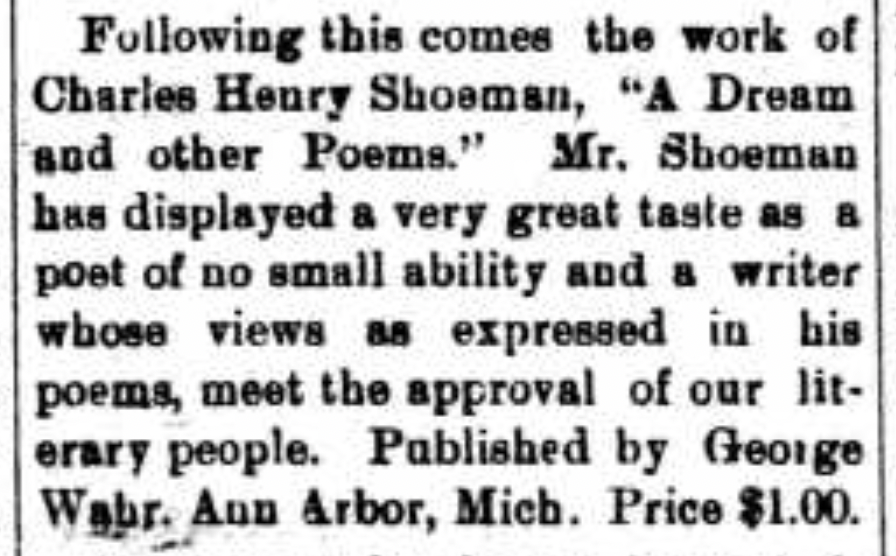
A DREAM AND OTHER POEMS
The poems in this anthology are traditional narratives written in Standard American English, along with looser, more lyrical verses, written in African-American Vernacular English. One piece, simply titled 'Lydia', is the true story of his aunt, taken by an enslaver to New Orleans. Shoeman vividly describes the grief felt by his family, and their lifelong, fruitless search for Lydia.
I am hunting with this poem
Hoping that she may still read,
That she's not forgotten, Lydia,
May it to her loved ones lead.
One of the most popular poems in Shoeman's book was an ode to American orator Robert Green Ingersoll. Nicknamed 'The Great Agnostic,' Ingersoll was, among other things, friends with Frederick Douglass and an outspoken abolitionist. Scathing criticism of slavery could be found in many of his speeches, and Shoeman's own works echoed the sentiments of Ingersoll.
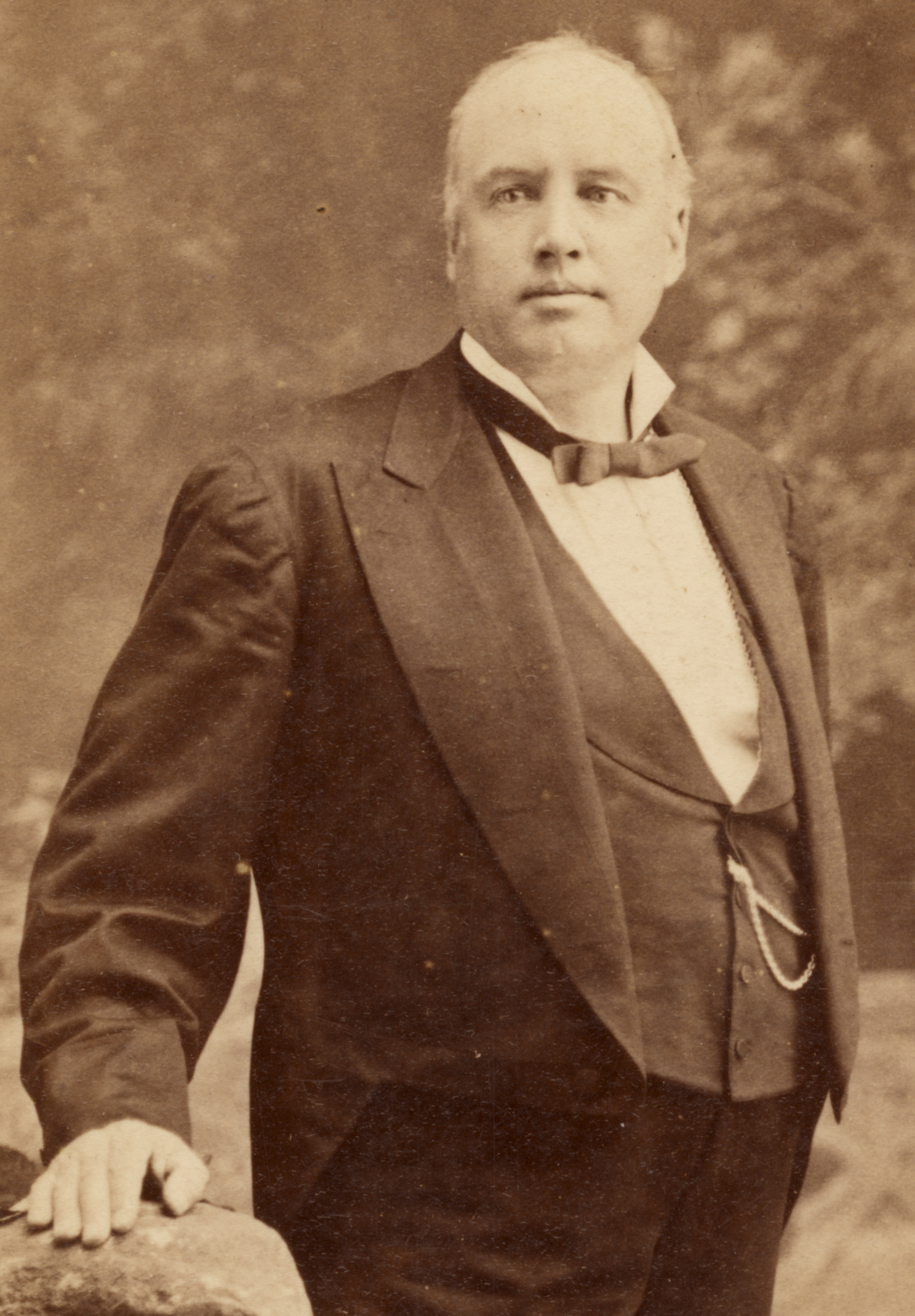
AN ODE TO INGERSOLL
O'er a life we could not fathom
O'er a soul far more obscure,
Dropped life's curtain, vaguely leaving
All behind still dark, secure.
Though a skeptic in his teaching,
With beliefs not like our own,
Let us judge not, lest a failure -
All shall reap as they have sown.
Though expounders grave with wisdom
Judge and think they know the heart,
We are mortals, often skeptic,
With beliefs too far apart.
And our lives in world; in secret,
Tell two tales to each unknown,

But our Judge, with mighty wisdom,
Holds them safely, all His own.
Mortal man is weak and wayward,
No one knows all truths within,
And in thinking, speak not harshly,
Lest with you there be the sin.
Far behind death's gloomy shadow,
Down that way we all must go.
Speak not harshly, speak not harshly,
We do not know, we do not know.
Included in both editions of his book was 'Keeps A-Sawin' Wood', written in African American Vernacular English.
KEEPS A SAWIN' WOOD
Ef day calls yo' cracked and crazy,
Keep right on a-sawin' wood,
Kos day nebber does git je'lous,
When yo' haint no good.
Ef day says yo' is big headed,
Kos yo' acts a gentleman,
Show dem dat yo' would befrien' 'um,
But keep sawin' all yo' can.
Some will try to take your woodpile,
When yo's sawed a lot ob wood.
Try toe lie an' get position
In de berry place yo's stood.
Some will try to 'buse a neighbor,
Kos he's sawed mo' wood dan day,
An' day allus git de hoo do,
An' despisin' fo' dar pay.
When day sees dat yo' is sawin',
An' how folks respect yo' name,
Day will quit dar pesty jawin',
An' will turn an' do de same.
Fo' dis worl' am full ob sawyers,
Men dey nebber can keep down;
Do day smote dem day will rise up,
Mid dar curses an dar frown.
Set a 'zample do yo's crazy,
Keep right on a sawin' wood,
Kos day nebber does git je'lous,
When yo' haint no good.
RISE AND FALL
Charles Henry Shoeman copyrighted a dramatic composition in April 1901, Elixir of Life. 1901 was a high point in Shoeman's career, and he was actively touring, lecturing, and entertaining. He spoke at universities, political events, high schools, Black American organizations, major city events, etc. across several states. He was very active in Ann Arbor's newly formed Colored Republican Club, where he served as vice president. On December 5, 1901, an article in The Chelsea Standard reported: "Charles H. Shoeman, Ann Arbor's colored poet, has found an 'angel' who will back him for a tour in England and already eleven engagements have been secured. Mr. Shoeman expects to leave about the first of February." Charles Henry Shoeman gave a final lecture at the University of Michigan's Newberry Hall, and left for England soon after. The identity of Shoeman's "angel" remains unknown.
From 1902 to 1906, he was overseas. It is assumed that he toured, giving performances and readings of his work. During his time away, in October 1905, his mother died of kidney disease. In October 1906, local newspapers reported the return of Charles Henry Shoeman to Ann Arbor. Soon after, Shoeman's life took an unexpected turn when the Ann Arbor Daily Argus published an article titled "A Poet's Finish".
It was reported that Charles "talks and laughs to himself, threatens to kill anyone who offers him meat and takes great delight in burning papers and books. He also says he can talk with his mother, who is dead." Based on this article, and similar accounts, Charles Henry Shoeman was experiencing a mental health crisis. His father filed paperwork to have him declared insane and sent to Pontiac.

Being 'sent to Pontiac' at this time in Michigan's history referred to the Eastern Michigan Asylum for the Insane, later known as Pontiac State Hospital. Details of Charles Henry Shoeman's stay at this facility are unknown, although it must have been brief as he never went missing from the Ann Arbor City Directory.
FROM POETRY TO PHOTOGRAPHY
1908 was a year of change for the Shoeman family. The Ann Arbor city directory shows Charles Henry as 'photographer', living with his father and brother on Main Street.
It was during 1908 that C. J. Shoeman shuttered his barber shop and moved to Canada. Drawn by the offer of free land, he applied for a homestead in Saskatchewan. Doing so included a commitment to become a British citizen, and he never lived in the United States again.
Charles Henry Shoeman moved north and appeared in the 1910 federal census as Charles H. Shuman, living on Main Street in Frankfort, Michigan. He is listed as a photographer employed in a gallery. How he found himself in northern Michigan is unknown. The only other person of color listed in Frankfort in the 1910 census was Lim Bach, a Chinese laundry owner, who happened to live in the same building as Charles Henry.
C. J. Shoeman died in North Battleford, Saskatchewan, Canada on May 2, 1917. His will refers to his children, Lewis living in Detroit, and Charles Henry, living in Traverse City, Michigan.
Efforts to locate Charles Henry Shoeman in the 1920 federal census have not been successful. He reappeared in the 1930 federal census as Charles Schuman, a patient at the State Hospital For The Insane in Traverse City, Michigan.
Charles Henry Shoeman died from pulmonary tuberculosis on November 17, 1939 in the Traverse City State Hospital, Traverse City, Michigan. He was 63 years old. His death certificate, under the name Charles Schuman, notes his 1876 birth in Goshen, Indiana. It shows his home residence as South Frankfort, Michigan, for the past 27 years, 9 months, and 8 days. He is noted as a "single", "colored", "photographer", and that his remains will be sent to Ann Arbor.
Three days later he was buried in the Shoeman family plot in Ann Arbor's Fairview Cemetery with his mother. Lewis, his brother, died in Kalamazoo, Michigan on May 21, 1942. He was also buried in the Shoeman family plot. Neither Charles Henry nor Lewis have individual grave markers. C. J. Shoeman, their father, has an individual grave marker in the family plot with no date of death, a hint to the fact that his body actually rests in Saskatchewan, Canada.

If you find yourself in Ann Arbor's Fairview Cemetery, keep an eye out for the reddish-orange granite Shoeman stone, shaped like a piece of toast. Here, in the city's first racially integrated cemetery, rests Charles Henry Shoeman, with his mother, brother, and many other beloved Black American community members.
FINAL THOUGHTS - THE MICHIGAN DUNBAR?
Examining the life and work of Charles Henry Shoeman, it's difficult to overlook the similarities to the life and work of Paul Laurence Dunbar. Both were Black American men born in the 1870s to formerly enslaved parents. Both were raised in the midwest with natural gifts for writing. Both published work, gained fame as poets, and toured the country to share their thoughts on the hopes and burdens of the Black community. Both had careers that were tragically cut short. Both even died of tuberculosis. A 1901 article in the Grand Rapids Press, titled "The Michigan Dunbar", went so far as to declare Shoeman the Paul Laurence Dunbar of Michigan.
Dunbar's legacy inspired many Black American literary giants - Maya Angelou, Langston Hughes, & Zora Neale Hurston, to name a few - and it's hard not to wonder if Charles Henry Shoeman could have reached similar success. The Dunbar Center, a prominent Black community organization in Ann Arbor's history, was named for Paul Laurence Dunbar. Savonia Lewis Carson, Charles Henry Shoeman's aunt, served as the first executive secretary of the Dunbar Center. Did she see the similarities between her nephew and Paul Laurence Dunbar? We can only speculate.
James Daniel & Thomas Gieryn - Winners Of The Elks Pratt Lodge/Daisy Chain Temple Oratorical Contest, May 1966 Photographer: Eck Stanger

Year:
1966
Ann Arbor News, May 3, 1966
Caption:
James Daniel (left), Ypsilanti High School senior, and Thomas Gieryn, Ann Arbor High School senior, display their trophies after winning the oratorical contest sponsored by Elks Pratt Lodge No. 322 and Daisy Chain Temple. Gieryn placed first and Daniel second in competition on "The Negro and The Constitution." Gieryn, the son of Mr. and Mrs. Fred V. Gieryn of 2541 Hawthorne, will go on to the state competition in June. Daniel is the son of the Rev. and Mrs. William J. Daniel of 213 Buffalo, Ypsilanti. Pratt Lodge and the Temple also honored Mrs. Charlesetta Monroe, a former director of the oratorical contest project, in the program which was held at Bethel AME Church Sunday.
James L. Crawford Honored As Elk Of The Year, March 1981 Photographer: Jack Stubbs
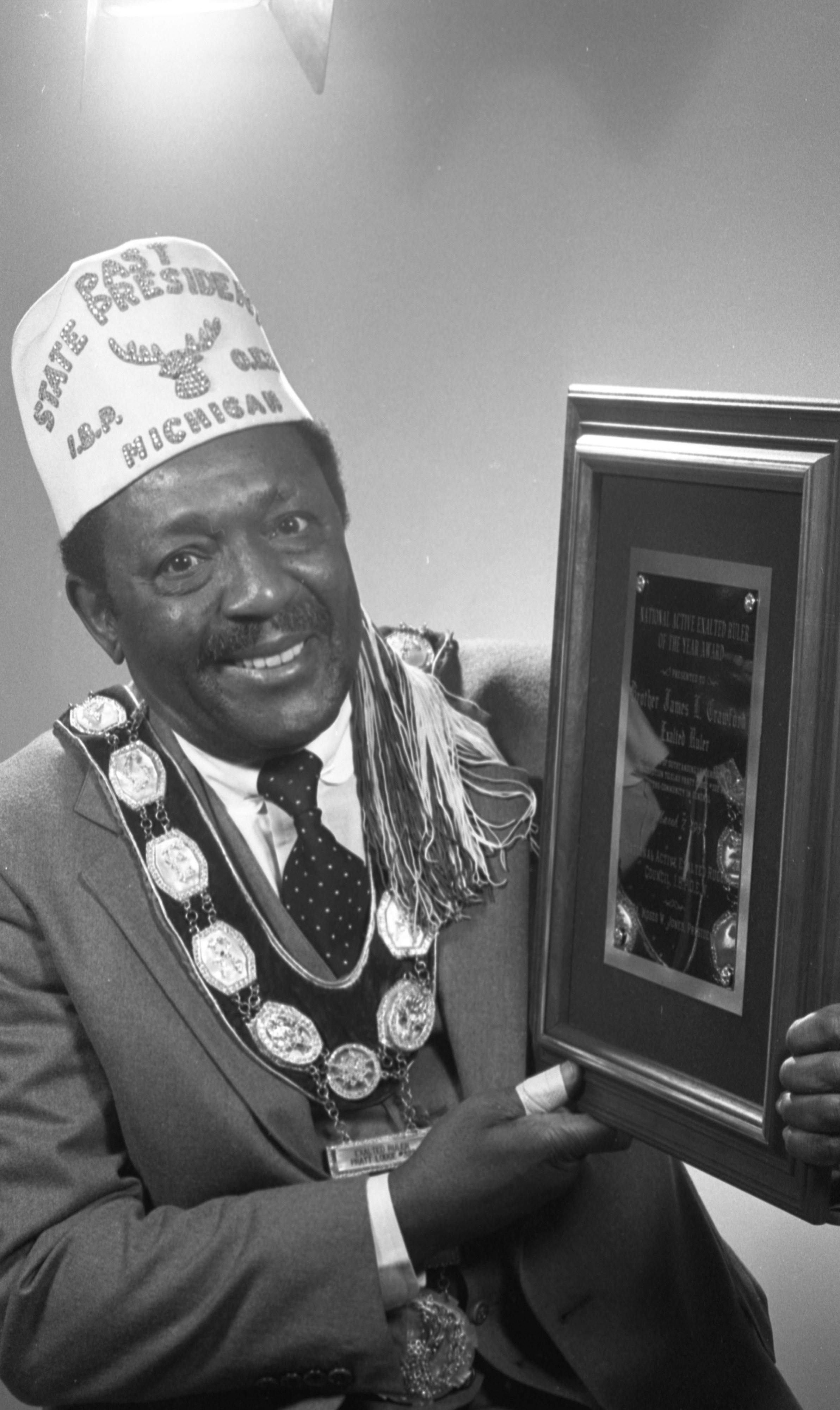
Year:
1981
Ann Arbor News, March 15, 1981
Caption:
HONORED - James L. Crawford of 1111 Miner St., exalted ruler of the Elks Pratt Lodge No. 322 in Ann Arbor, was recently honored as "Elk of the Year" during the 12th annual spring conference of the National Active Exalted Rulers Council in Knoxville, Tenn. He was recognized for his service to the local lodge as well as to the community. Crawford has also been named Elk of the Year in Michigan. He is president of the Michigan Active Exalted Rulers Council and a member of the Bethel A.M.E. Church in Ann Arbor. Crawford has been an Elk since 1947 and exalted ruler of the Pratt Lodge since 1962. He is employed by the Ann Arbor Trust Co.
James Crawford, Exalted Ruler, Elks Pratt Lodge No. 322, circa 1975

Year:
c.1975
JCC Conversations | Dr. Isaiah “Ike” McKinnon
Dr. Isaiah McKinnon, former police officer who became the chief of the Detroit Police Department and the deputy mayor of Detroit. He was one of the first African American officers in the Detroit police force and was almost killed by racist fellow police officers in an incident that was later covered internationally.
2020 Calendar - The Village That Raised Their Children: The History of Ann Arbor's Black Community
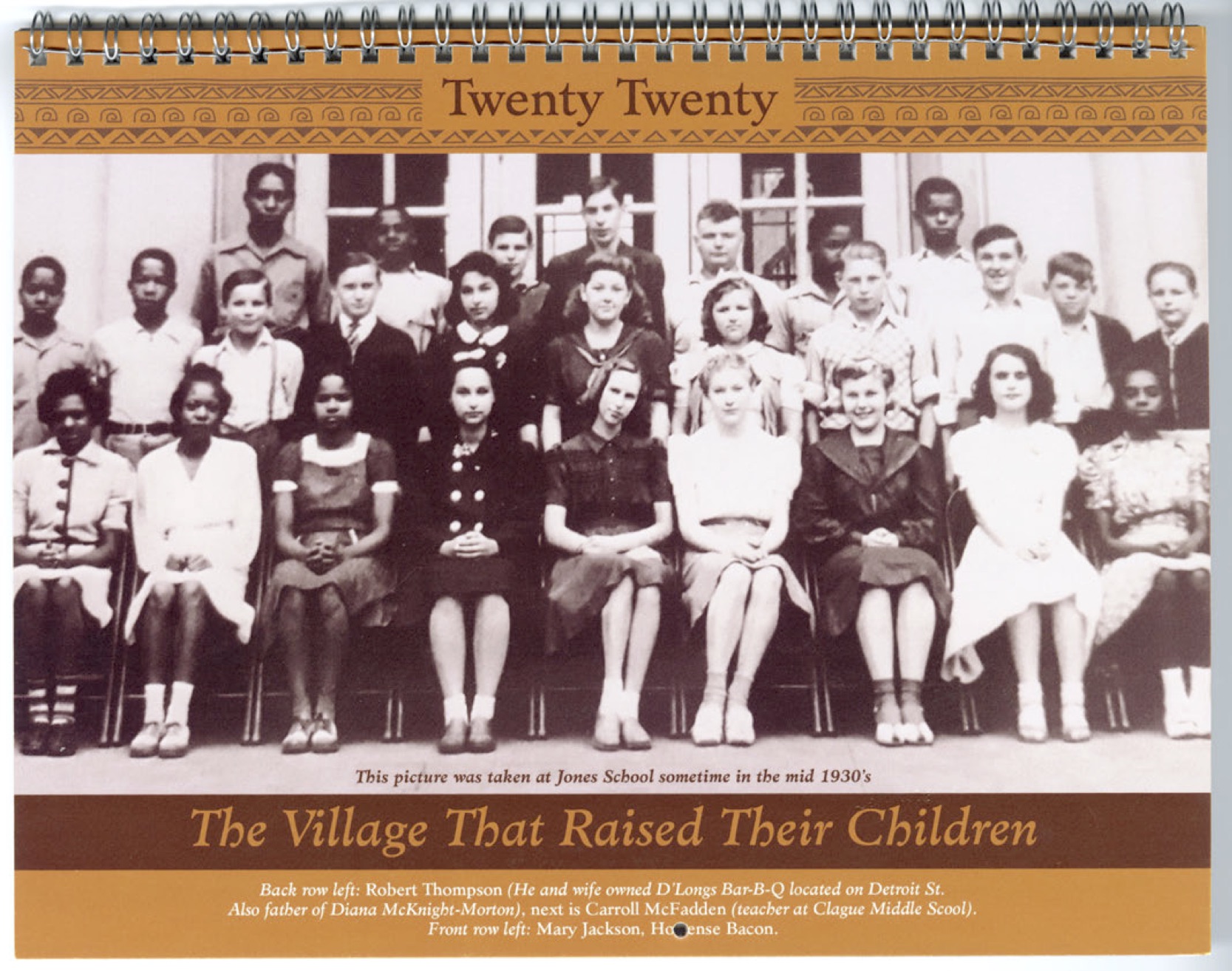
2017 Calendar - The Village That Raised Their Children: The History of Ann Arbor's Black Community
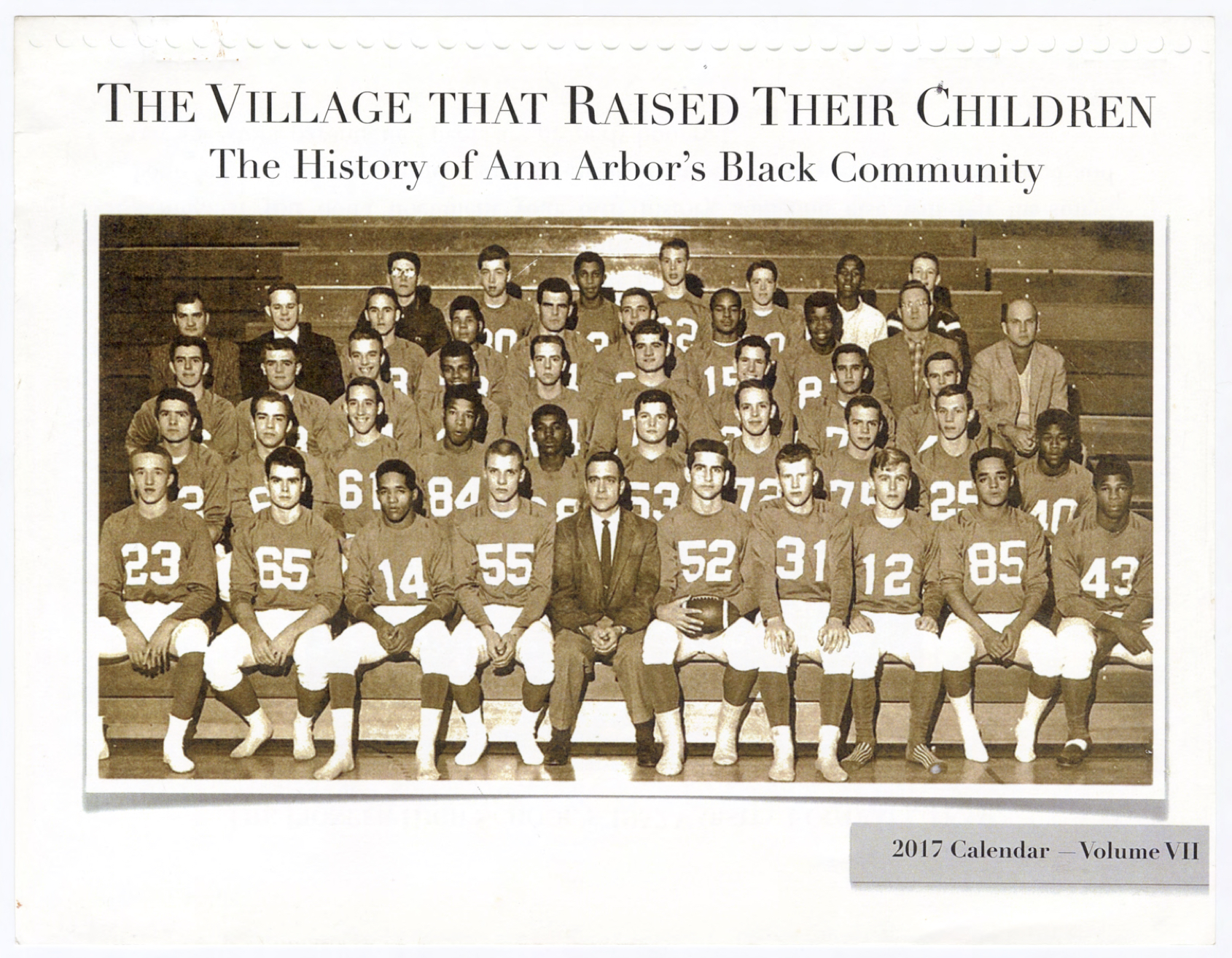
2013 Calendar - The Village That Raised Their Children: The History of Ann Arbor's Black Community
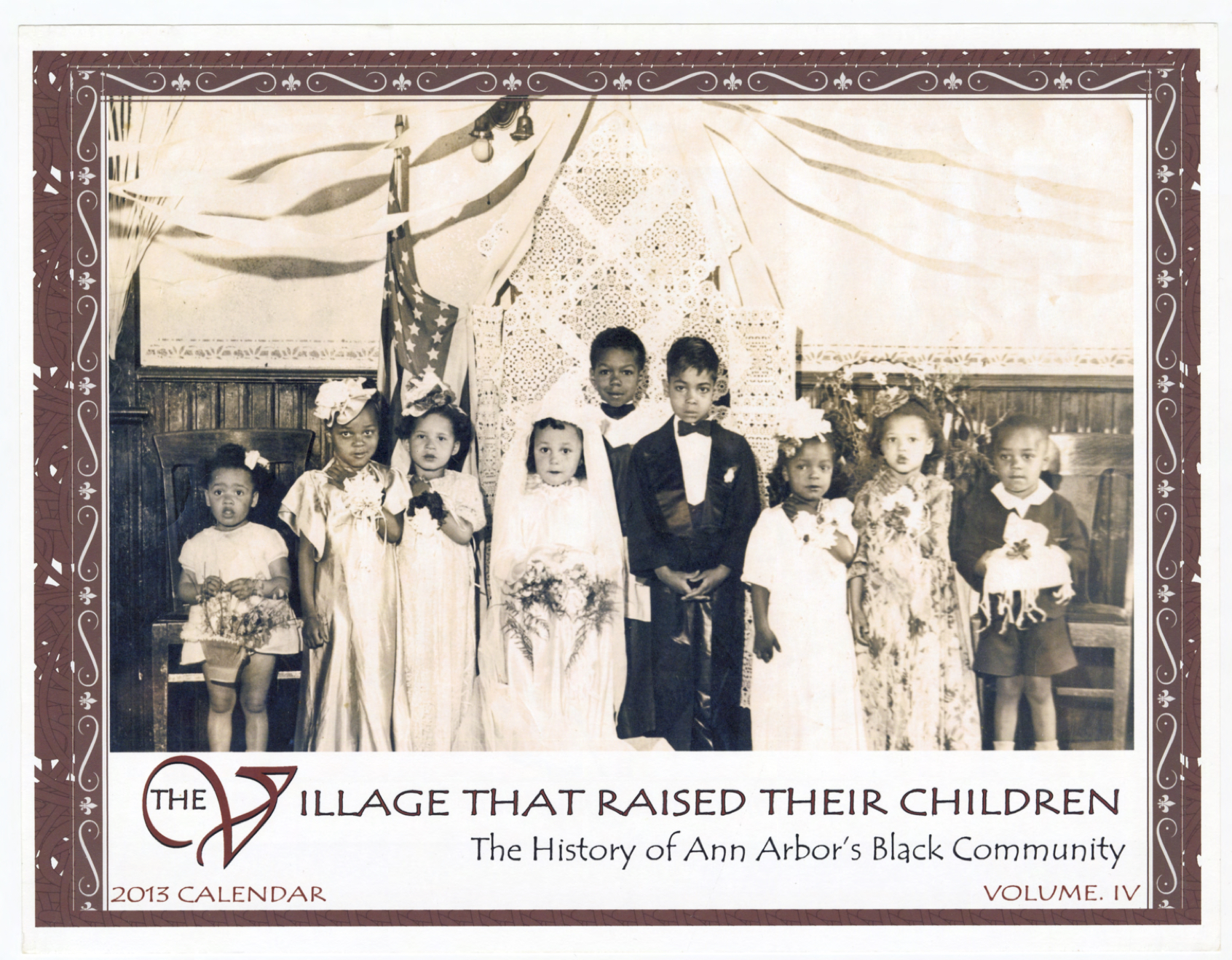
2012 Calendar - The Village That Raised Their Children: The History of Ann Arbor's Black Community
